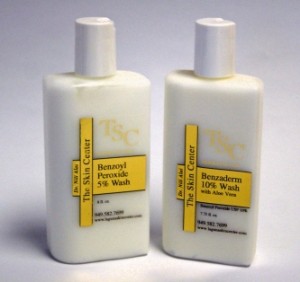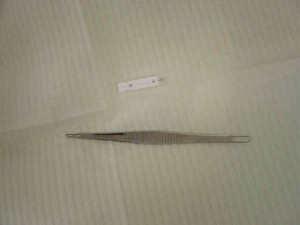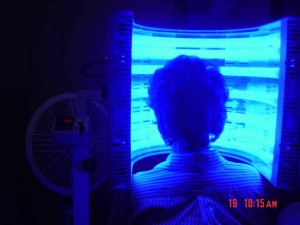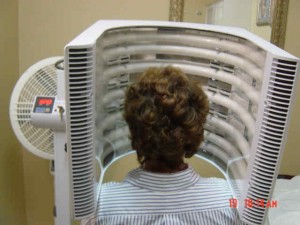26081 Merit Circle Suite #109
Laguna Hills, CA 92653
(949- 582-7699
(949) 582-SKIN
Fax (949) 582-7691
Dr. Nili N. Alai, M.D., FAAD & Dr. Gary W. Cole, MD, FAAD
Diplomat, American Board of Dermatology
Fellow, American Society of Mohs Surgery
Fellow, American Academy of Dermatology
Former Professor University of California, Irvine
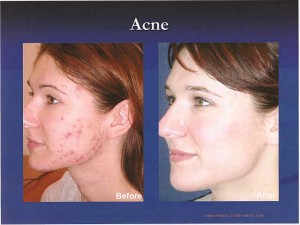
BLU-U® Blue Light Treatment by Dusa Pharmaceuticals, Inc.
Photodynamic Therapy
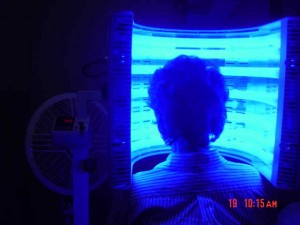 Acne Treatment
Acne Treatment
There’s no reason to suffer with acne. If you have acne, it can be embarrassing and lead to low self esteem. Without treatment severe cases of acne can be disfiguring, leaving permanent scars. New techniques are available to treat acne and minimize outbreaks. Call our office for an appointment and lets clear up this problem!
Acne is an equal opportunity condition, afflicting teenagers, young adults, and occasionally even more mature adults. BLU-U® Blue Light Acne Treatment uses light – without drugs or antibiotics – to treat hard to control acne, including acne vulgaris. The special blue light kills the p. acnes bacterium that grows inside clogged pores that swell up and form pimples on the skin.
BLU-U® light treatments involve sitting with your face close to the light for a short time (typically 8 to 16 mins 40 secs) about once or twice per week for a period of about five weeks or so. The procedure is safe, not painful, and not hot. Over the course of the treatments, most patient experience noticeable control or clearing up of their acne for a very long period.
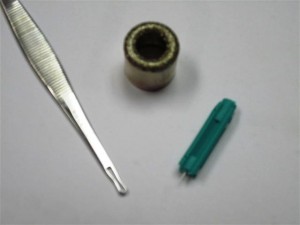
- Glycolic and or salicylic peels
- extractions using 30g needle or lancet and come done extractor
- slush ( light cryotherpay on swab
- Microdermabrasion
- steam, high frequency
Acne Products
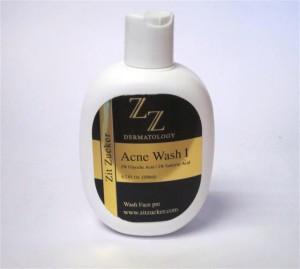
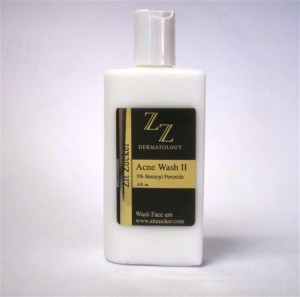
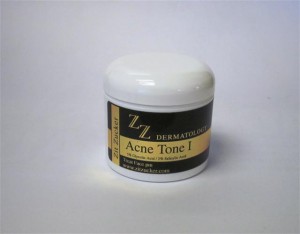
Acne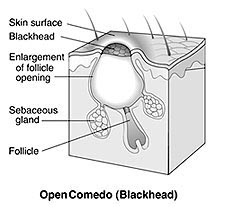
PDF Version of this Document | Audio Version of this Document | Time: 08:14 | Size: 7.7 MB
Publication Date: March 2005
Revised August 2006
What Is Acne?
Fast Facts: An Easy-to-Read Series of Publications for the Public
Acne is a disease that affects the skin’s oil glands. The small holes in your skin (pores) connect to oil glands under the skin. These glands make an oily substance called sebum. The pores connect to the glands by a canal called a follicle. Inside the follicles, oil carries dead skin cells to the surface of the skin. A thin hair also grows through the follicle and out to the skin. When the follicle of a skin gland clogs up, a pimple grows.
Most pimples are found on the face, neck, back, chest, and shoulders. Acne is not a serious health threat but, it can cause scars.
How Does Acne Develop?
Who Gets Acne?
What Causes Acne?
How Is Acne Treated?
How Should People With Acne Care for Their Skin?
What Things Can Make Acne Worse?
What Are Some Myths About the Causes of Acne?
What Research Is Being Done on Acne?
How Does Acne Develop?
Sometimes, the hair, sebum, and skin cells clump together into a plug. The bacteria in the plug causes swelling. Then when the plug starts to break down, a pimple grows.
There are many types of pimples. The most common types are:
- Whiteheads. These are pimples that stay under the surface of the skin.
- Blackheads. These pimples rise to the skin’s surface and look black. The black color is not from dirt.
- Papules. These are small pink bumps that can be tender.
- Pustules. These pimples are red at the bottom and have pus on top.
- Nodules. These are large, painful, solid pimples that are deep in the skin.
- Cysts. These deep, painful, pus-filled pimples can cause scars.
Who Gets Acne?
Acne is the most common skin disease. People of all races and ages get acne. But it is most common in teenagers and young adults. An estimated 80 percent of all people between the ages of 11 and 30 have acne outbreaks at some point. Some people in their forties and fifties still get acne.
What Causes Acne?
The cause of acne is unknown. Doctors think certain factors might cause it:
- The hormone increase in teenage years (this can cause the oil glands to plug up more often)
- Hormone changes during pregnancy
- Starting or stopping birth control pills
- Heredity (if your parents had acne, you might get it, too)
- Some types of medicine
- Greasy makeup.
How Is Acne Treated?
Acne is treated by doctors who work with skin problems (dermatologists). Treatment tries to:
- Heal pimples
- Stop new pimples from forming
- Prevent scarring
- Help reduce the embarrassment of having acne.
Early treatment is the best way to prevent scars. Your doctor may suggest over-the-counter (OTC) or prescription drugs. Some acne medicines are put right on the skin. Other medicines are pills that you swallow. The doctor may tell you to use more than one medicine.
How Should People With Acne Care for Their Skin?
Here are some ways to care for skin if you have acne:
- Clean skin gently. Use a mild cleanser in the morning, evening, and after heavy workouts. Scrubbing the skin does not stop acne. It can even make the problem worse.
- Try not to touch your skin. People who squeeze, pinch, or pick their pimples can get scars or dark spots on their skin.
- Shave carefully. If you shave, you can try both electric and safety razors to see which works best. With safety razors, use a sharp blade. Also, it helps to soften your beard with soap and water before putting on shaving cream. Shave lightly and only when you have to.
- Stay out of the sun. Many acne medicines can make people more likely to sunburn. Being in the sun a lot can also make skin wrinkle and raise the risk of skin cancer.
- Choose makeup carefully. All makeup should be oil free. Look for the word “noncomedogenic” on the label. This means that the makeup will not clog up your pores. But some people still get acne even if they use these products.
What Things Can Make Acne Worse?
Some things can make acne worse:
- Changing hormone levels in teenage girls and adult women 2 to 7 days before their period starts
- Pressure from bike helmets, backpacks, or tight collars
- Pollution and high humidity
- Squeezing or picking at pimples
- Hard scrubbing of the skin.
What Are Some Myths About the Causes of Acne?
There are many myths about what causes acne. Dirty skin and stress do not cause acne. Also, chocolate and greasy foods do not cause acne in most people.
What Research Is Being Done on Acne?
Scientists are looking at new ways to treat acne. They are:
- Working on new drugs to treat acne
- Looking at ways to prevent plugs
- Looking at ways to stop the hormone testosterone from causing acne.
For More Information on Acne and Other Related Conditions:
-
National Institute of Arthritis and Musculoskeletal and Skin Diseases (NIAMS)
Information Clearinghouse
National Institutes of Health1 AMS Circle
Bethesda, MD 20892-3675
Phone: 301-495-4484
Toll Free: 877-22-NIAMS (226-4267)
TTY: 301–565–2966
Fax: 301-718-6366
Email: NIAMSinfo@mail.nih.gov
Website: http://www.niams.nih.gov -
The information in this publication was summarized in easy-to-read format from information in a more detailed NIAMS publication. To order the Acne Q&A full-text version, please contact NIAMS using the contact information above. To view the complete text or to order online, visit http://www.niams.nih.gov.
Personalize your Acne Treatment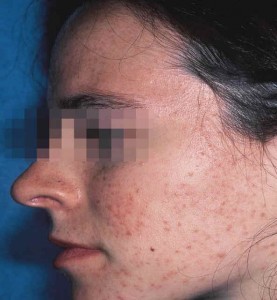
We will base your personal acne program on your specific needs at your visit. Call The Skin Center at (949) 582-SKIN to schedule an appointment.
1. Wash AM and PM: Wash your face twice daily with:
-
Alternate Benzoyl peroxide wash and Glysal wash or Salac Or DHL Sal Shampoo-Use one wash in AM (shower) and in the PM (by sink). Available at The Skin Center.
-
Acne soap (DHS sal shampoo, Salac, Neutrogena oil-free acne wash, Panoxyl Bar 5%, Benzac wash, Brevoxyl wash, TRIAZ, Brevoxl).
-
Ovace face wash, Plexion Cleanser, Rosanil, Clenia.
-
Mild Soap/ Cleanser (Dove, Purpose, Basis, Cetaphil, Oil of Olay)
-
Obagi Cleanser ( Step 1) and then apply Obagi Toner ( Step2)
-
Cleocin (clindamycin) lotion, clindet pledget (wipe), clindagel
-
Benzoyl peroxide- sold exclusively at The Skin Center (Benzac,Brevoxyl, Triaz), Triaz Pad
-
Klaron Lotion, Metrogel, Metrolotiom
-
Benzaclin, Duac gel spot treatment
-
Obagi Sunfader
-
Obagi Zinc SPF 30
3. PM: Please apply the following each evening:
(if too irritating, use every other night) Use these all over face- don’t spot treat, but DO avoid crevices like corners of mouth &nose,eyes (All OF THESE MAY BE IRRITATING)
-
Differin gel/cream pledgets to all over face
-
Retin A (tretinoin)
-
Tazorac every night / only every other night to face, back, chest, arms
-
Benzaclin, Duac gel spot treatment, Finacea gel
4. Take the following pill: (follow the proper directions for all medications)
-
Tetracycline
-
Minocin/ Minocycline/ Dynacin/ Doxycyline/ Adoxa
-
Amoxicillin
-
Zithromax
5. AM or PM: If your skin gets dry, you can use non-comedogenic moisturizers
-
The Skin Center Oil free moisturizer sunscreen or glycolix elite facial moisturizer
-
Cetaphil or Eucerin lotion for face with sunscreen
-
Desowen lotion- once or twice a day ONLY for red itchy rash, dry areas- (don’t use regularly)
- Moisturizing sunscreens like TSC Oil free SPF30 moisturizer sunscreen, TSC sunscreen spray , Physician’s Complex SPF 30 sunscreen with zinc
- Gel(non oil) sunscreens- Ombrelle, Presun clear gel, solbar liquid, Ti-Screen
- Best coverage for greater than 15-30 minute sun exposure Obagi Zinc SPF 30, TSC SPF 30 17% zinc

7. If you wear cosmetics make sure they are oil-free and try to avoid powders.
8. If you have any allergic reaction, stop the medication and call our office. STOP ALL MEDICATIONS IMMEDIATELY IF DECIDE TO BECOME PREGNANT OR THINK YOU MAY BE PREGNANT.
9. Return for a follow up appointment when suggested by your physician
10. Recommend The Skin Center Skin Recovery System (SRS) acne program at follow up including steam, slush, extractions, microdermabrasion and mild glycolic peel, blue light, ALA/ blue light
For more information, please call (949) 582-7699
Your personalized acne program MAY include:
-
Facials/ Acne Treatments
-
Glycolic Gentle Peels series every 2-4 weeks to begin
-
Medium TCA/Jessner Peel (Blue peel) (1 hour appt )7 days downtime: Face, Neck or Chest
-
Blue light or laser precision peel (15-30 min appt)
-
Acne Extractions
-
Photofacial/ Photo rejuvenation for brown spots, freckles, age spots, red areas, broken vessels, wrinkles- This may include several treatments. (No Downtime with Laser or IPL)
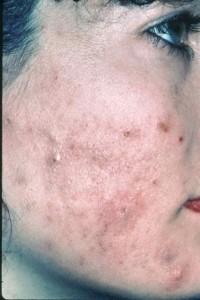
Acne & Related Inflammatory disorders
Clinical Professor, Department of Dermatology University of California, Irvine
ACNE & Inflammatory Disorders
- Acne Vulgaris
- Acne Rosacea
- Perioral Dermatitis
- Hidradenitis Suppurativa
- Keratosis Pilaris
- Folliculitis
- Acneiform Dermatitis
Who is Affected?Everyone at some time in their life
- From babies to seniors
- high prevalence
- Often under treated or self treated
- Atypical presentations of common disease
- May lead to permanent scarring
- Controllable
Why Treat Acne?
-
Psychosocial impact
-
self esteem, confidence, job, social status
-
Untreated may lead to permanent scarring
-
Emphasis in teenagers -classic occurrence
Dispelling Acne Myths
- Acne is not caused by poor hygiene or diet
- Vigorous washing will not remove comedones and may worsen inflammation
- Topical therapies should be applied to all potential acne areas, not just to lesions, because they work by preventing the formation of new lesions (they do little to shrink existing lesions)
-
Follicular plugging (pores closed)
-
Sebum production ( oil production)
-
Bacterial colonization
Acne is disease caused by 4 interrelated processes affecting the pilosebaceous unit
– altered follicular hyperkeratinization
– sebaceous gland hyperactivity
– Propionibacterium acnes (P acnes) proliferation
– Inflammation/immune hypersensitivity to
P acnes
TRIPLE THERAPY IS KEY!
1. Retinoid (unplugs)
2. Benzoyl peroxide (antibacterial, unplugs,etc)
3. Antibiotics (decrease bacteria)- oral or topical
Combine one product out of each category.
Current Treatment Options:
Topical
- Retinoids
- Benzoyl Peroxide
- Antibiotics
- Azelaic Acid
- Salicylic Acid
Comination treatments
Benzoyl Peroxide + Antibiotics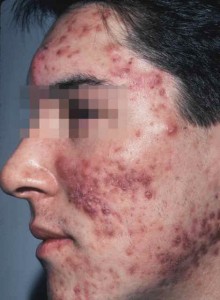
Oral
- Antibiotics
- Isotretinoin
- Corticosteroids
- RETINOIDS
- Adapalene (Differin)
- Tretinoin (Retin A, Renova, Avita)
- Tazaratone (Tazorac, Avage)
-Do not use in pregnant, breastfeeding, or trying to become pregnant.
-May be irritating, use small amount, avoid around the eyes, apply every other night
Severe Acne
Techniques to minimize irritation
– gradual introduction of medication; initiate use with low concentration formulations
– no scrubbing
– adequate moisturization
– brief application followed by gentle washing
- Clindamycin ( Clindets wipes, or clindagel)
- Erythromycin
- Metronidazole ( Metrogel)
- Sulfa ( Klaron)
ANTIBIOTICS: Oral
- Amoxicillin
- Tetracycline
- Doxycycline
- Minocycline
- Azithromycin
Antibiotic Resistance
- Clindamycin and erythromycin have become less effective topical acne therapies in the past 20 years
- Loss of efficacy is due to the acquisition of resistance by P acnes
- The addition of BPO dramatically reduces resistance to erythromycin and clindamycin
Other Oral Prescriptions
- Oral Contraceptives
- Spironolactone ( anti-androgen)
- Accutane
Practical ACNE Review: Top 10 List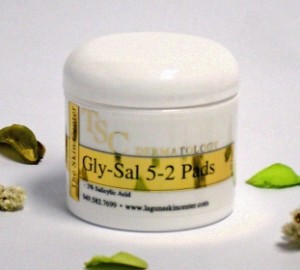
1. Benzoyl Peroxide
2. Topical Retinoids
3. Topical Antibiotics
4. Salicyclic acid
5. Glycolic acid
6. Combination topical products (Antibiotics & BP)
7. Oral antibiotics
8. Oral Retinoids
9. Oral Contraceptives
10. Oral Antiandrogens ( Spironolactone)
Differential Diagnosis:
- eczema
- folliculitis
- drug reaction
- rosacea
- delusions of parasitosis
- neurotic excoriations
- furuncluosis
- hidradenitis suppurativa
Acne if Pregnant or Breastfeeding
SAFE:
- Erythromycin gel
- oral amoxicillin/ampicillin
NOT SAFE:
- Retinoids (Retin-A, Differin, Tazorac)
- Oral Tetracylines
Lasers
- Different targets based on laser source
- Some target bacteria, some redness, others collagen
- usually multiple treatments needed
- No guarantees
- Generally cosmetic/ non- insurance
What is Rosacea?
- Primarily Red
- Located on Cheeks and Nose
- more in Caucasians (Scottish, Irish)
- Inflammatory
How to Treat Rosacea
- Sulfa Wash as directed
- Metrogel
- Oral Antibiotics
- Lasers or Photofacial
Postacne Scarring
Treatment options
- Dermal fillers (collagen)
- Laser therapy
- Surgery (punch removals)
- Facial peels
The “ACNE SAMPLER”
In office adjunctive treatment :
- Glycolic and or salicylic peels
- extractions using 30g needle or lancet and comedome extractor
- slush ( light cryotherpay on swab)
Summary
-
Acne affects many ages from infancy to geriatric
-
“Triple therapy” very effective:
-topical retinoid
-topical antibiotic &/or benzoyl peroxide
-oral antibiotic
-
Accutane for severe, cystic, or refractory acne
-
Acne is a common condition
-
Acne may persist into adulthood in some patients (mostly women)
-
Patients with acne commonly experience both physical and psychologic impairment
Photodynamic Therapy
- Uses a photosensitizer compound
- Apply to skin and leave on for a time
- Expose skin to controlled amount light
- Levulan ( part of porphyrin system)
- Has downtime 2-7 days- red/sunburn
- Works by oxygen free radical formation
Laguna Hills, CA 92653
For more information, please call (949) 582-7699 or visit the practice website at www.lagunaskincenter.com.
Information in this publication and site is not intended to serve as medical advice. Individuals may use the information as a guide to discuss their treatments with their own physicians. This site does not promote nor endorse the unauthorized practice of medicine by non-physicians or state licensed health care providers.
Medicine is a constantly changing science and not all therapies are clearly established. New research changes drug and treatment therapies daily. The authors, editors, and publisher of these artciles have used their best efforts to provide information that is up-to-date and accurate and is generally accepted within medical standards at the time of publication. However, as medical science is constantly changing and human error is always possible, the authors, editors, and publisher or any other party involved with the publication of this article do not warrant the information in this article is accurate or complete, nor are they responsible for omissions or errors in the article or for the results of using this information. The reader should confirm the information in this article from other sources prior to use. In particular, all drug doses, indications, and contraindications should be confirmed in the package insert.
Copyright © 2003-2008 The Skin Center. All rights Reseved.
